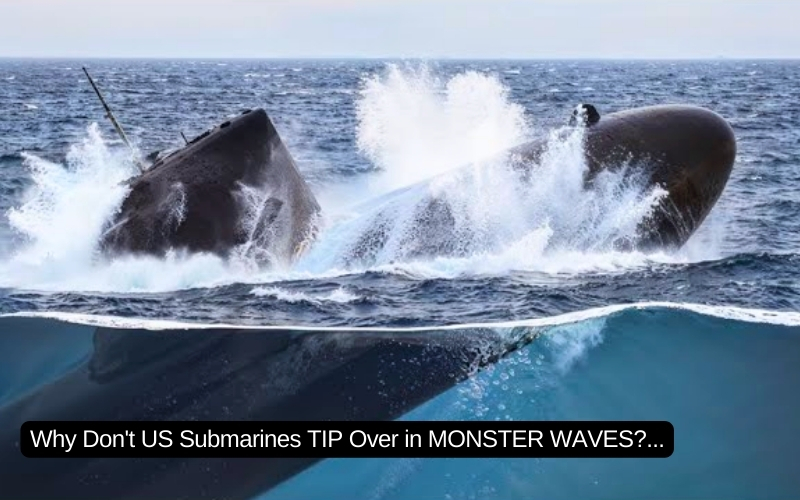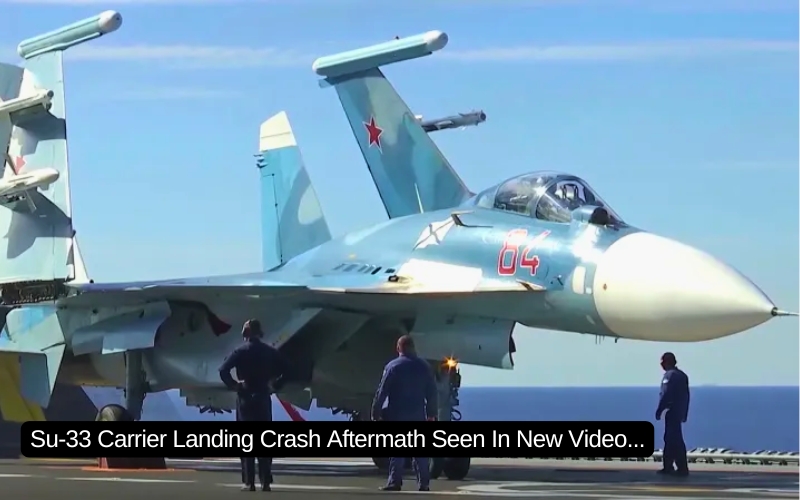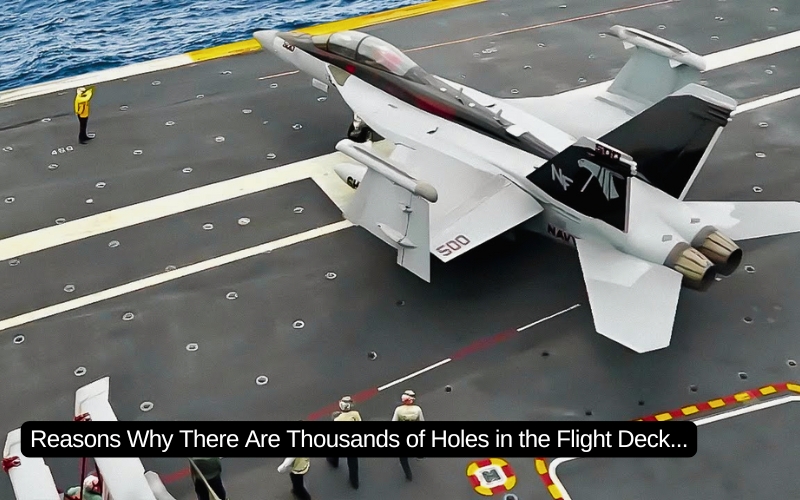Initially developed only for the Fleet Air Defense, the F-14 eventually evolved into an appreciated strike fighter at the peak of its career.
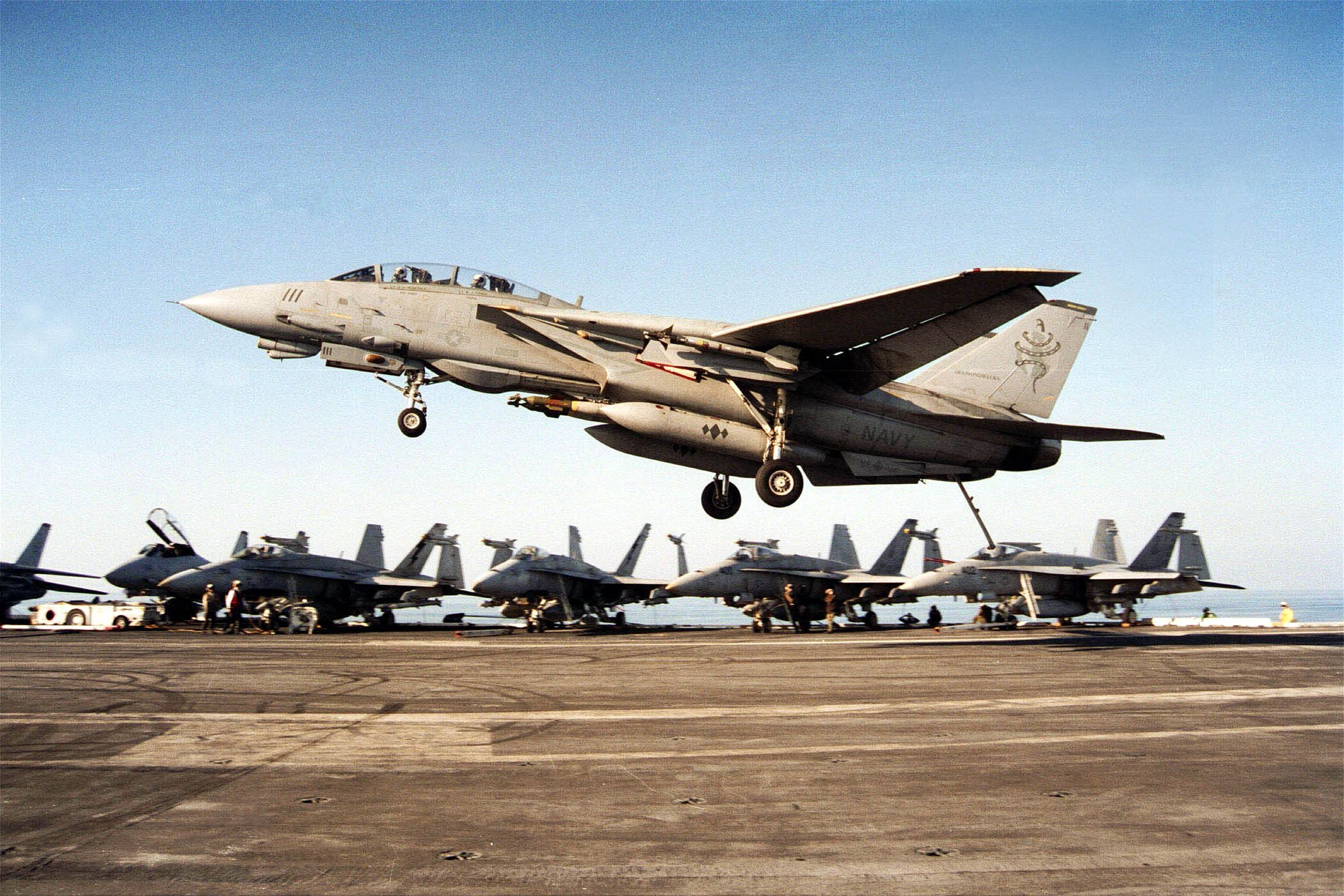
The F-14 Tomcat was primarily designed to defend the U.S. Navy’s fleets from airborne threats, using its AWG-9 radar and the long-range AIM-54 Phoenix missiles for against bombers carrying standoff anti-ship missiles. Later in its 36-years career, the Tomcat evolved from a pure fighter to a strike fighter, a configuration commonly known as “Bombcat”.
After Desert Storm, budget cuts caused 11 frontline F-14 units to be decommissioned due to the aircraft’s high maintenance costs and single-mission capability. At the same time, the all-weather long-range A-6 Intruder bomber was retired due to its high maintenance costs and because strategists considered it not useful in a post-Cold War scenario.
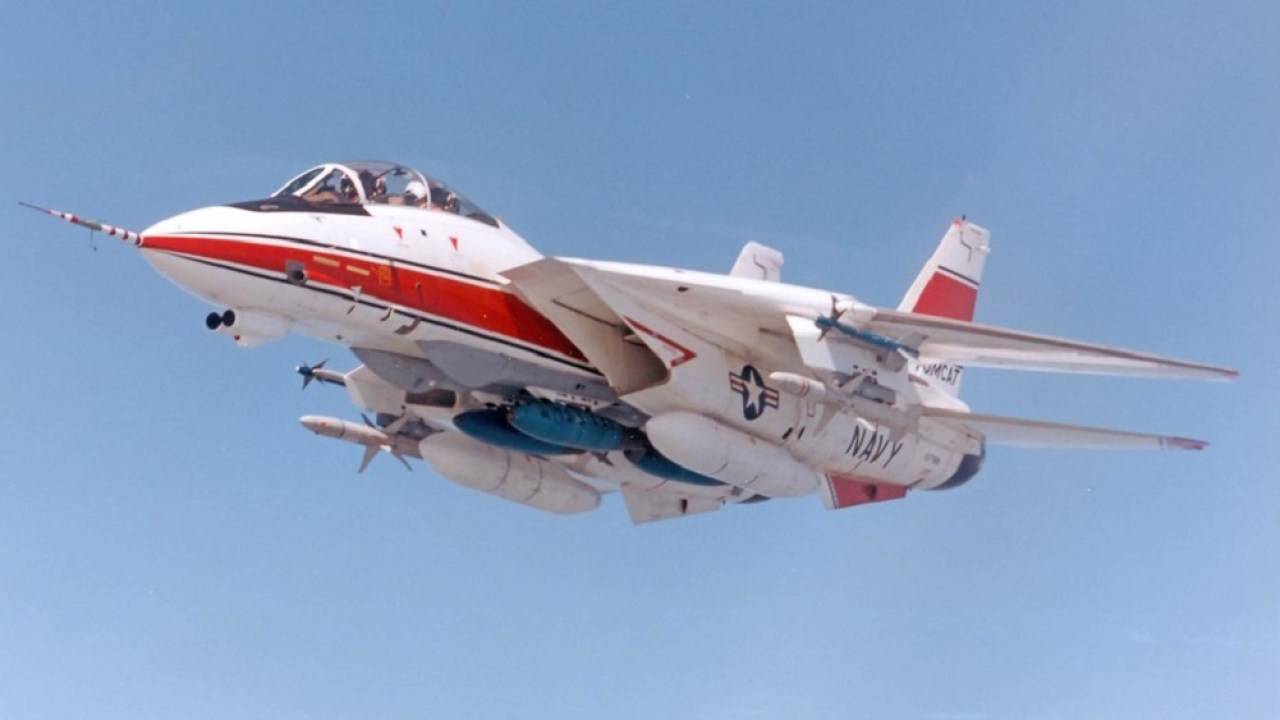
The retirement of the A-6 Intruder left a capability gap until the new F/A-18E/F Super Hornets entered service. The F-14 could carry more bombs than the F/A-18A/C Hornet and, with its long range and heavy payload, it became the aircraft carrier’s deep strike platform, effectively replacing the A-6. The F-14 was also highly effective in the self-escorted strike role and a part of the Tomcat community has long been arguing for an air-to-ground role, even if some others saw this as an heresy.
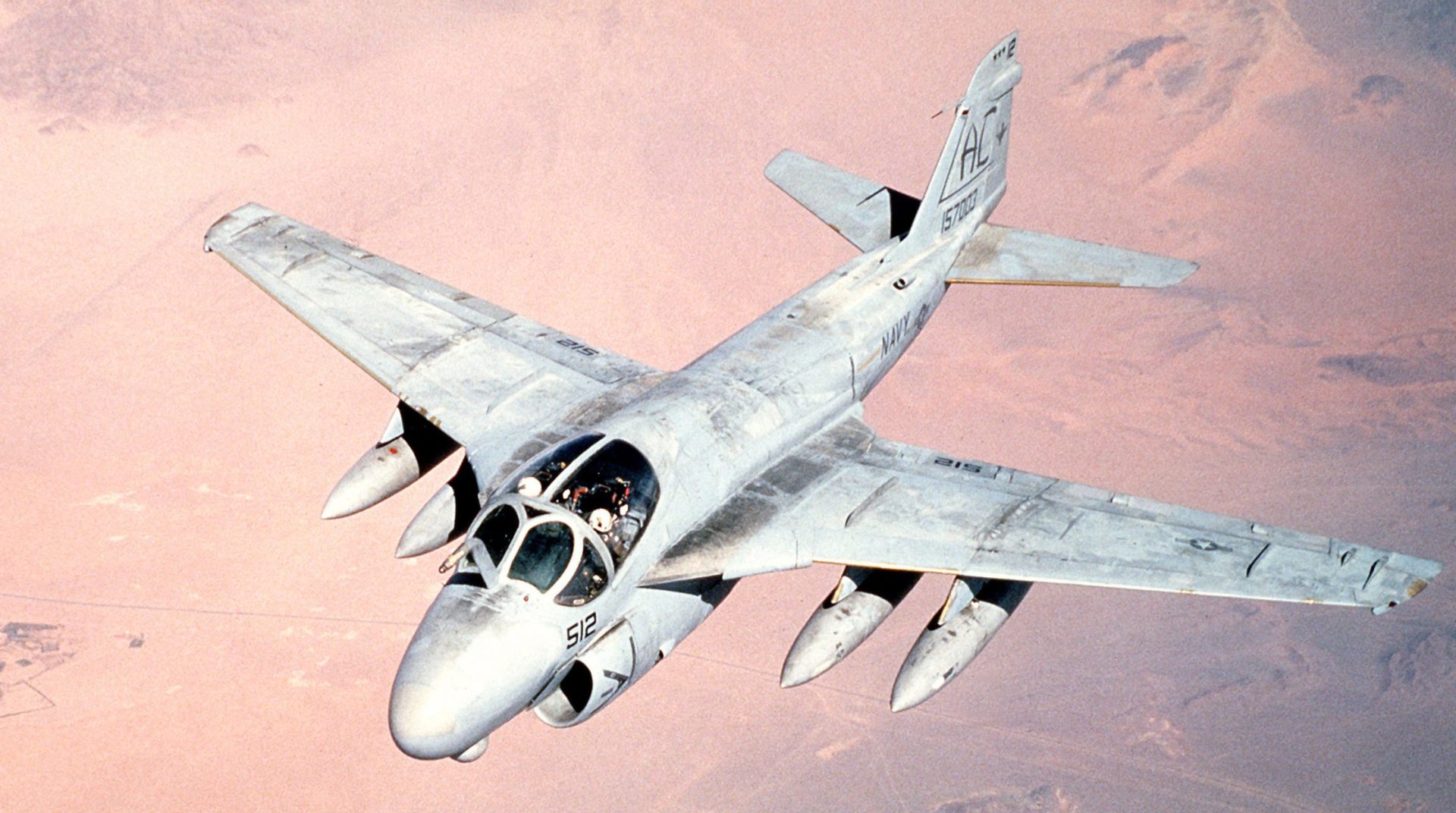
The original Naval Fighter Experimental (VFX) specification from June 1968 included an important secondary close air support role, with a payload of up to 14,500lb (6,577kg). Even if this mission requirement was later abandoned by the US Navy, Grumman worked to ensure the F-14 could, if required, fly in a strike fighter role. In 1973 a Tomcat even flew with 14 Mk82 500lb (227kg) bombs attached to modified Phoenix missile rails, as well as two AIM-7 Sparrow and two AIM-9 Sidewinder air-to-air missiles on its wing glove pylons. The AWG-15 (air-to-ground attack system) weapons control panel was also installed in the cockpit, but it only had limited functionality.
When it was decided to finally let the F-14 drop bombs too, the basic Bombcat could only employ unguided free-fall bombs. Weapons cleared for use by the jet included the 500lb (227kg) Mk-82, both low-drag and Snakeye or BSU-86 high-drag configurations, and the equivalent 1,000lb (454kg) Mk-83 bomb and 2,000lb (907kg) Mk-84 bombs. Later in the early 1990s, cluster bombs were introduced in the Bombcat’s inventory, including the anti-armour Mk-20, Mk-99 and Mk-100 Rockeye and the CBU-78 Gator, followed by the GBU-12, GBU-16 and GBU-10 Paveway II laser-guided bombs.
In September 1995, the VF-41 “Black Aces” operated off the coast of Bosnia during Operation Deliberate Force, and the operation marked the F-14’s first ever delivery of air-to-ground ordnance in combat. Both laser-guided and free-fall bombs. At that time the Bombcat was missing a self-designating capability, so they flew in mixed sections of F/A-18s and F-14s, with the Hornets buddy-lasing the targets. One major benefit that the Tomcat had was its capability to bring it back aboard the carrier its entire heavy load of laser-guided munitions if they weren’t used in combat, while the Hornet was forced to jettison them to meet the weight requirements before landing back on the carrier.
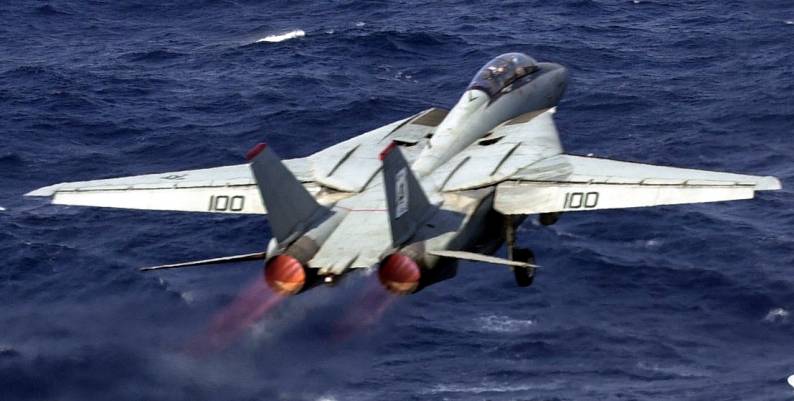
Martin Marietta, which later became Lockheed Martin, in 1994 proposed the LANTIRN system for the F-14. Differently from the USAF’s two-podded LANTIRN, the USN version featured only the AN/AAQ-14 targeting pod (LTP) with modifications including GPS, ballistic tables and navigation aids. Fairchild previously upgraded a small number of F-14Bs with the installation of equipment that translated the analogue signals of the AWG-9 radar and AWG-15 weapons control system into a format readable by a MIL STD 1553 digital databus. This was the key to the successful integration on LANTIRN. Fairchild was then contracted to produce a Precision Strike Processor that was installed into the console of the F-14 RIO station.
The resulting AAQ-25 LTS pod was not integrated into the F-14’s computers and software, but instead it fed images directly into the crew’s displays. Since this was a single-pod system, LANTIRN lost the capability to automatically fly the aircraft in terrain following radar mode. The pod introduced a masking avoidance curve display, preventing the pilots to put the airframe between the pod and the target and interrupting the lasing, and a 12,200 m (40,000 ft) capable laser that became very useful later in the higher terrain of Afghanistan, allowing the Bombcat to employ guided munitions high above potential threats. Another capability was the generation of accurate coordinates for any target, located on the FLIR, that could be then passed to other aircraft or ground assets.
The images could be clearly seen thanks to the RIO’s Programmable Tactical Information Display System (PTIDS), a 10-inch high-resolution display that allowed a more precise targeting than other aircraft available at that time. However, with the AAQ-25, the modified Tomcat lost the TARPS recon capability, as the LANTIRN controller replaces the TARPS panel. Later, a solution was reportedly found to allow the same aircraft to carry simultaneously both pods. Anyway, the LANTIRN pod was highly reliable with a near 100% availability rate.
Since LANTIRN was already a mature system, trials were conducted in the fleet, allowing to field the system in about 223 days. The VF-103 “Jolly Rogers” was chosen for the trials, dropping in March 1995 the first laser-guided training rounds (LGTR). At the end of June the system began its first operational deployment onboard the USS Enterprise (CVN-65) with the Jolly Rogers. Even with the arrival of the F-14D, the F-14B would serve as the primary F-14 version for ground attack.
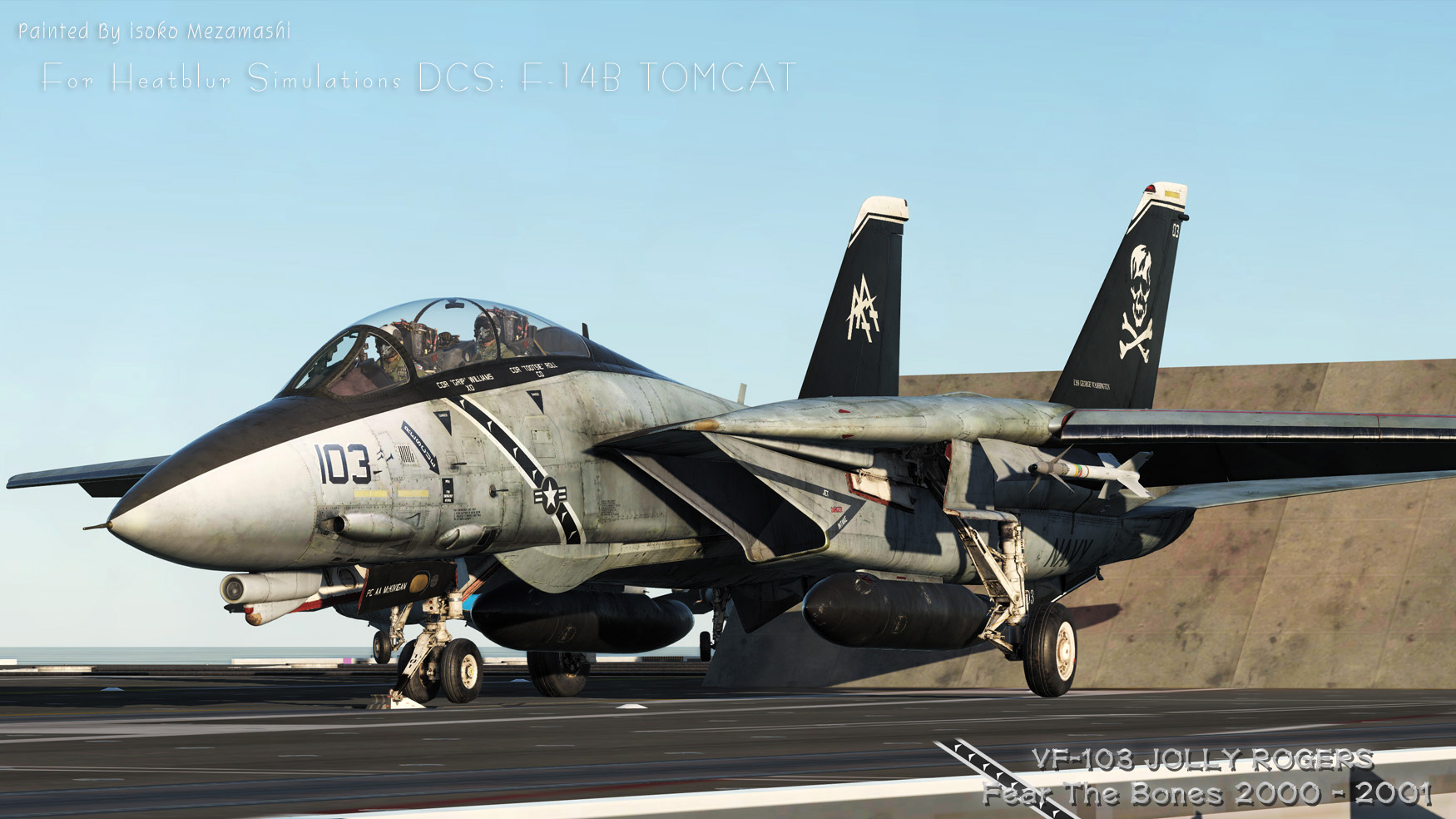
In the following years, the AAQ-25 spread throughout the Fleet, as have NVG’s and another upgrade that fitted digital architecture systems from the F-14D into F-14A/B’s, providing them with advanced weapons, a new RWR and additional chaff/flare dispensers. The digital flight control system (DFCS) from the F-14D provided enhanced maneuverability and improved low-speed handling characteristics, allowing pilots to perform more aggressive maneuvers and eliminating the dutch roll of the earlier analogue AFCS equipped F-14A, which caused the aircraft’s nose to yaw in response to roll inputs, making it difficult to line up with the aircraft carrier.
One of the first operational employments of the F-14/LANTIRN duo was narrated also by Dave “Bio” Baranek, which is probably the world’s most famous F-14 RIO after “Goose”, during a recent live streaming here at TheAviationist. VF-211 “Fighting Checkmates” was deployed in September 1997 with CVW-9 aboard USS Nimitz (CVN-68) to enforce the Southern No-Fly Zone over Iraq as part of Operation Southern Watch. The F-14s flew with a mixed ordnance load, carrying multiple air-to-air missiles (AIM-7, AIM-9 and AIM-54) for the no-fly zone patrolling duties and air-to-ground ordnance for quick reaction, should the need arise while in the air. For this quick reaction role they carried cluster bombs because, as an area weapon, they could give a good chance to attack missile sites. By the way, even if it wasn’t a SEAD (Suppression of Enemy Air Defences) asset, the F-14 was also tested with the AGM-88 HARM under the glove stations. The capability never made it to the fleet tough.
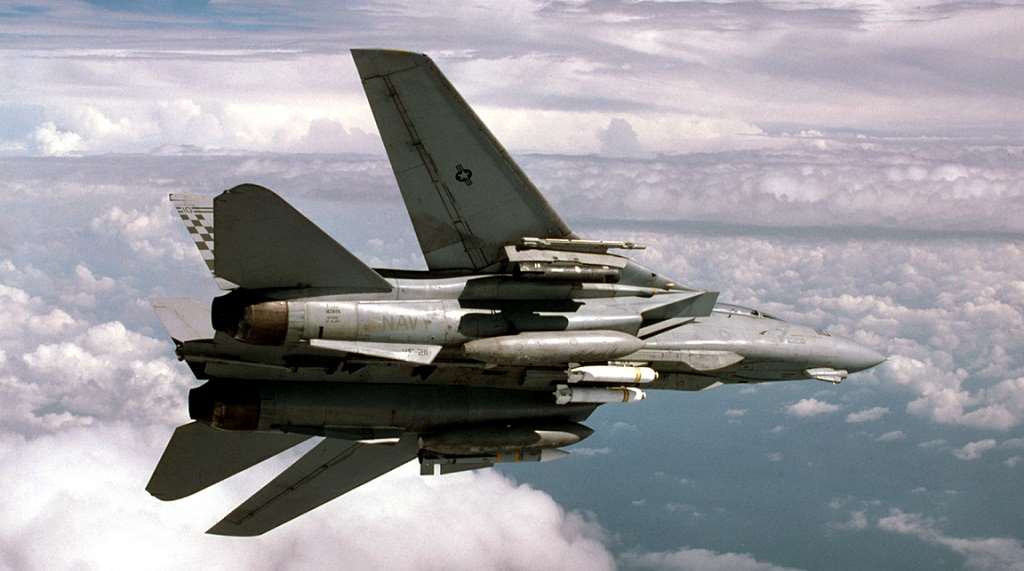
F-14s started to drop bombs on targets in Iraq in the early hours of December 16, 1998 as Operation Desert Fox, a four-day aerial offensive to destroy Iraq’s ability to produce Weapons of Mass Destruction (WMD), was launched. An exclusive Navy operation in the beginning days, Desert Fox saw the F-14Bs of VF-32 “Fighting Swordsmen” play a central role, flying precision strikes from the USS Enterprise (CVN-65).
The next chapter for the Bombcat was Allied Force, NATO’s campaign against the Federal Republic of Yugoslavia to stop human rights abuses in Kosovo. The Tomcats embarked on USS Theodore Roosevelt (CVN-71) with CVW-8 played a key role value as the value of the FAC(A) capability quickly became evident against rapidly advancing Serbian forces in Kosovo, being able to coordinate Strike Coordinated Armed Reconnaissance (SCAR) missions. The F-14’s LANTIRN had an advantage over the F/A-18’s NITE Hawk targeting system in this case, as the AAQ-25 could see farther and provided a higher resolution image.
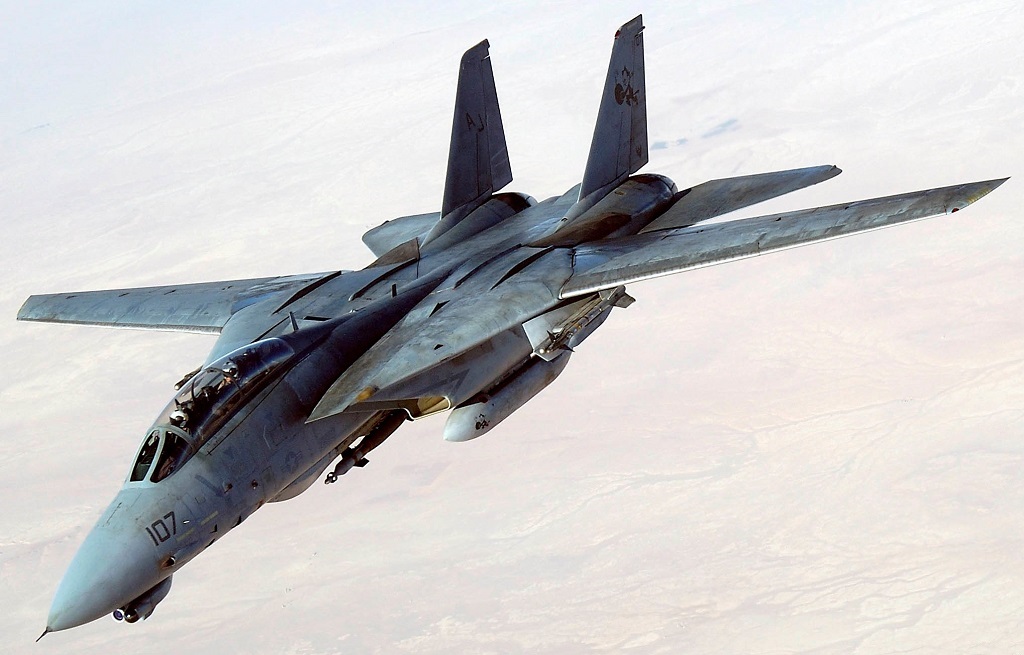
In 2001 the F-14As of VF-14 “Tophatters” and VF-41 “Black Aces” were embarked on USS Enterprise on their last cruise with the Tomcat. They were on the closest carrier to Afghanistan and, with the F-14Ds of VF-213 “Black Lions” embarked on the USS Carl Vinson (CVN-70) arriving in the area, they became the first aircraft to be employed in Operation Enduring Freedom (OEF). Aircraft carriers were initially the only way to bring tactical air power in Afghanistan. Tomcats, Hornets and Prowlers units flew more than 700 miles (1,126km) from their carriers in six to ten hours-long missions in the longest carrier-launched strikes in history. The Black Lions flew from the first night in strike-fighter configuration, tasked both as escort for USAF’s bombers and strike on preplanned targets.
In 2002 it was the turn of VF-11 “Red Rippers” and VF-143 “Pukin Dogs” to debut over Afghanistan. Their debut was particularly important because they were equipped with the 2,000 lb GBU-31 JDAM. The GPS-guided JDAM was first used by the F/A-18C during Operation Allied Force and, by 2001, the new bombs were also cleared for the F-14. VF-11 and VF-143 were the first two squadrons to receive the upgrade, subsequently applied to all F-14Bs and F-14Ds. The F-14A was excluded because it lacked the necessary software. The GBU-31 became also one of the principal weapons employed by the Tomcat in Iraq in 2003, with the VF-2 “Bounty Hunters” becoming the first F-14D unit to receive it just before Operation Iraqi Freedom begun.
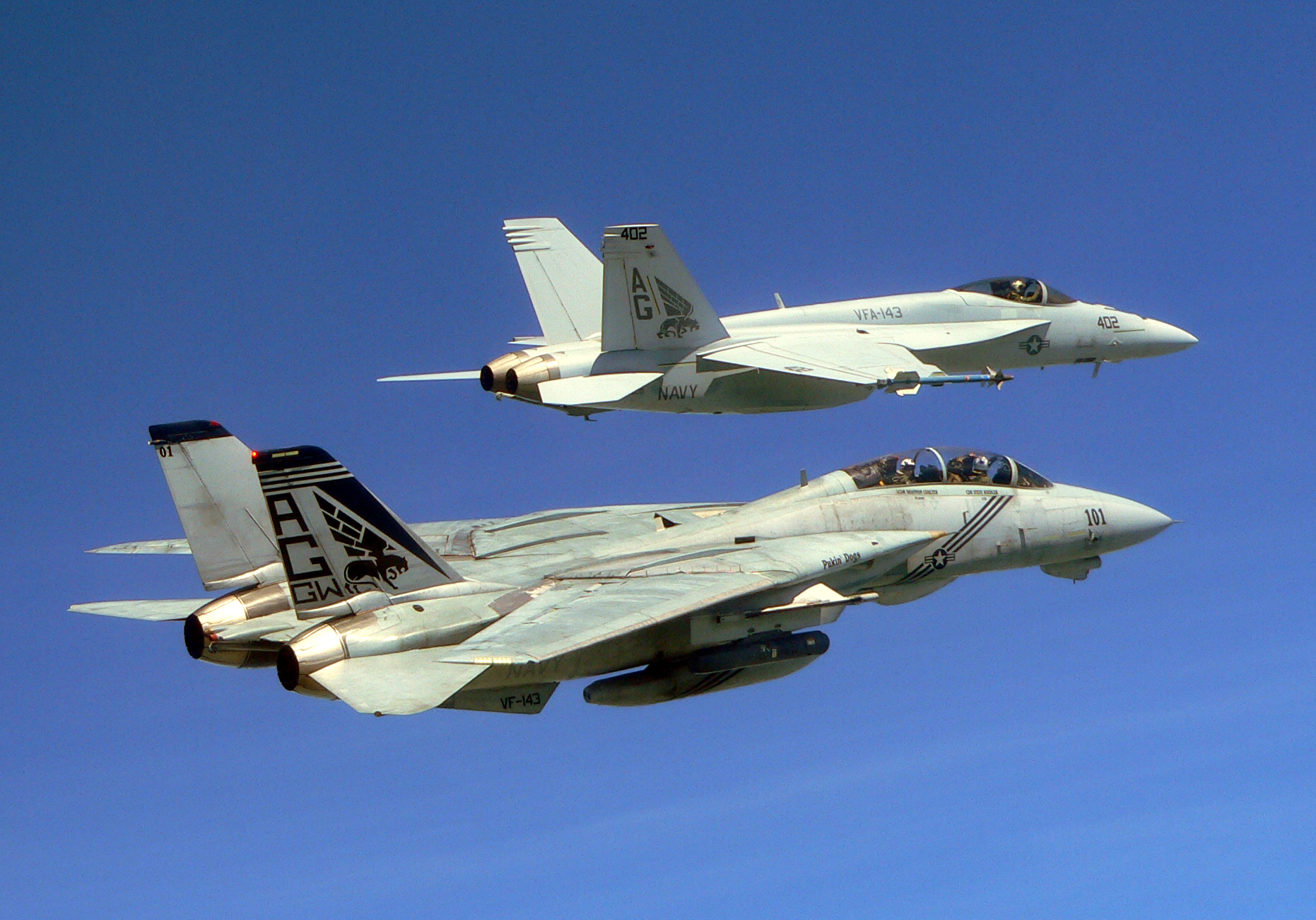
Shortly before the type’s last deployment in 2005, the Tomcats of VF-31 “Tomcatters” and VF-213 “Black Lions“ received also the 500 lb GBU-38 JDAM. The GBU-38, like the bigger GBU-31, was first used in combat by the F/A-18 Hornet in October 2004 over Fallujah. The 2,000 lb GBU-31 had a large blast footprint that was not deemed safe to use in an urban environment when supporting ground troops, and in that environment the F-14s could effectively employ only the laser-guided GBU-12. With the GBU-38, they now had again two weapons to choose from when providing air support.
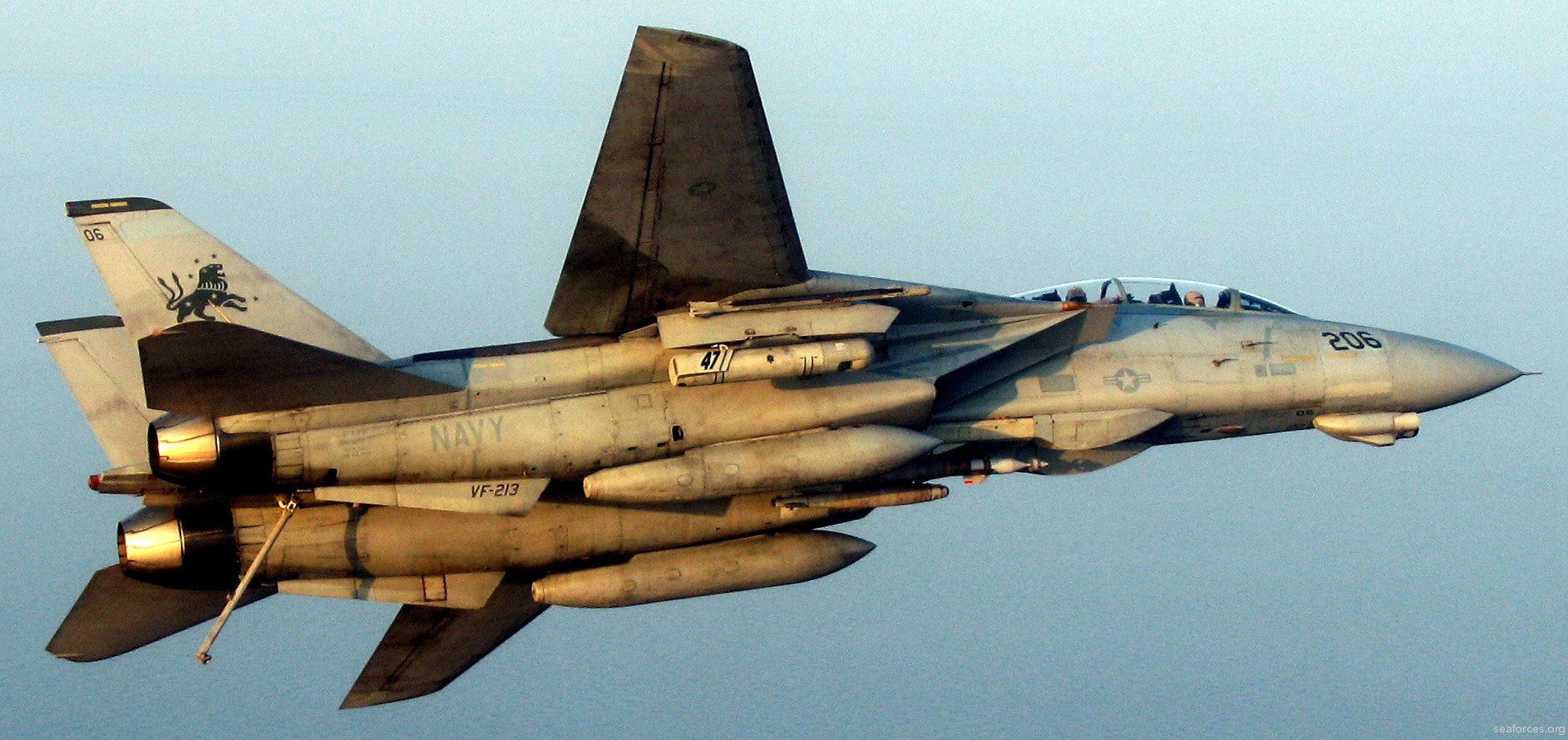
Another upgrade for the last deployment, which actually arrived three months into the cruise, was the Remotely Operated Video Enhanced Receivers (ROVER) system. The system provides a real-time feed to the ground troops, allowing them to see trough the aircraft’s sensors. CVW-8 made the request for ROVER, which then was available only for the UAVs, and within six weeks the F-14s were retrofitted with the new system, making them the first USN aircraft to employ the new system.
With the arrival of ROVER, CVW-8 started patrolling Iraq with mixed formations of F-14s and F/A-18s, the latter equipped with the new ASQ-228 Advanced Targeting Forward-Looking Infra-Red (ATFLIR), to get the wider possible selection of weapons for CAS missions. The LANTIRN/ROVER-equipped Tomcat were armed with a GBU-12 and a GBU-38, while the ATFLIR-equipped F/A-18C carried a GBU-38 JDAM and an AGM-65E laser Maverick.
As we know, after 36 years, the F-14 Tomcat was finally retired in September 2006. The aircraft had still a great potential to be exploited in the following years, however it was becoming increasingly expensive to maintain and the Department of Defense decided to cut funding for all Tomcat upgrades, like the Tomcat 21 program, in favor of the new F/A-18E/F Super Hornet. Many were not favorable to this decision, as the Tomcat still had some advantages over its replacement.
Source: theaviationist.com





